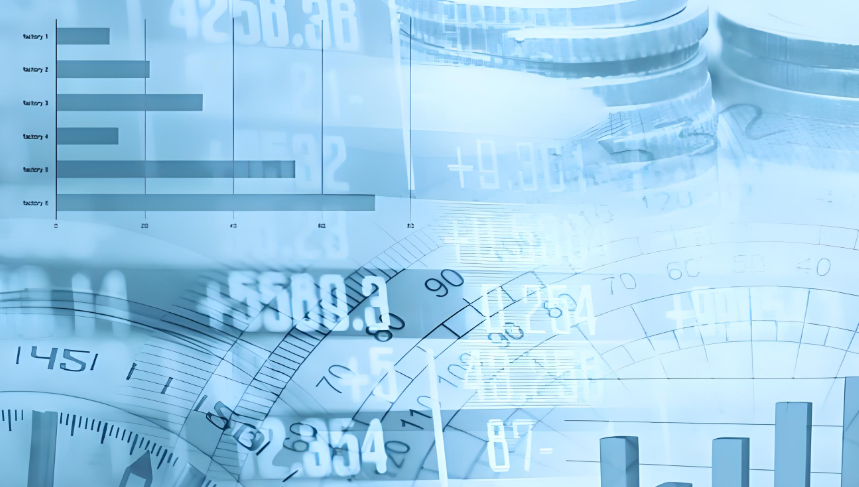In recent weeks,all eyes have been directed toward the inflation reports released by the U.S.Bureau of Labor Statistics (BLS).This heightened interest is not merely due to economic trends,but also because of the political backdrop.The nation has recently undergone a change in administration,and the specter of increasing inflation has the potential to stir public opinion and impact government policies.Consequently,the Consumer Price Index (CPI) report for January takes on heightened significance,as it could serve as an indicator of whether or not the Federal Reserve's anti-inflation measures are bearing fruit.
Historically,January CPI figures have presented a particularly telling snapshot of inflation trends,particularly in the post-pandemic era.According to Wall Street Journal’s Timiraos,the trend observed over recent years indicates that America experiences a considerable uptick in prices as the new year begins.This seasonal price adjustment is something businesses anticipate and adapt to,often raising prices in response to cost pressures that include food,energy,and labor expenses.For example,restaurants may raise menu prices,gyms may adjust membership fees,and ride-sharing services may increase rates—all common practices during the annual transition into a new fiscal year.
This phenomenon can be tied back to the notion of pricing power,which is traditionally more robust during periods of economic growth.According to Omair Sharif,founder of Inflation Insights,businesses feel more empowered to increase prices early in the year,particularly when consumers are currently demonstrating an unwillingness to tolerate rising costs.Thus,the upcoming January inflation report is likely to provide insights into whether or not the Fed's recent steps to manage inflation have alleviated some of the pressures that were stifling economic growth.
As the financial markets gear up for the unveiling of the CPI report,expectations are being set by a range of financial analysts.Reports coming from various sectors suggest an overall forecast of a 2.9% year-on-year increase in the January CPI,similar to the previous month.On a month-over-month basis,a 0.3% rise is anticipated,which is lower than the previous 0.4% increase reported.
Notably,excluding the often-volatile categories of food and energy,core CPI is expected to drop slightly from 3.2% to 3.1% year-on-year,although it is predicted to rise from 0.2% to 0.3% month-over-month.This breadth of projections from financial analysts indicates a diverse range of expectations,which reflects the unpredictable nature of inflationary pressures,particularly with energy prices known for their volatility.Thus,while there could be a return to the "3% era" of inflation,there is a significant amount of uncertainty surrounding how these indicators will play out.
Investment firms such as Goldman Sachs are weighing in with slightly more optimistic forecasts ahead of the report.They predict a core CPI increase of 0.34% in January—slightly above market expectations—resulting in a year-on-year increase of 3.19%.Their estimate for overall CPI growth sits at 0.36%,fueled by food prices increasing by 0.4% and energy costs rising by 0.6%.Essential components of this report,including the prices of automobiles and insurance,are focal points for analysts who are keen on gauging public sentiment about price increases.
Goldman Sachs has outlined several contributing factors in its analysis of the expected trends,such as used car prices continuing to show strong growth after a 1.2% increase in December.Their forecast indicates we could see used car prices rise by approximately 1.5% as auction prices increase.New vehicle prices,however,are predicted to rise at a more modest rate of 0. 5% due to promotional strategies from dealerships.
5% due to promotional strategies from dealerships.
Meanwhile,the insurance sector is expected to feel the impact of higher repair and medical costs,which pressurizes companies to adjust premiums accordingly.Analysts expect vehicle insurance prices to show a faster increase of 0.75% in January,compared to a 0.40% increase seen in December.
Furthermore,communication services may experience a seasonal bounce,as costs associated with postage may see upward adjustments,indicated by forecasts suggesting a price increase of around 0.5% in January.
The equity markets,which have an uncanny ability to react swiftly to economic data,will invariably be influenced by the outcomes of the CPI report.Stakeholders are particularly vigilant in assessing inflation risks as the economy grapples with external pressures stemming from government tariff threats.Just one year prior,there was a galloping momentum toward achieving the Federal Reserve's inflation targets,a trend that met with abrupt challenges and signaled a complex economic landscape.
Dallas Fed President Logans’ comments serve as a reminder that any resurgence in inflation signals further action is required from monetary policymakers.The Federal Reserve officials have communicated that they do not feel the urgency to lower interest rates before being confident that inflation will truly stabilize.
The market anticipates volatility upon the CPI release,as options market data reflects potential fluctuations within the S&P 500 index of approximately 1.3%.Such widespread impact following the announcement indicates current trepidation among investors reflecting gut instincts about unsustainable price rises.A survey by 22V Research revealed a mix of expectations regarding market reactions,with a notable fraction of participants foreseeing a "risk-off" approach.
In terms of variable financial outcomes,different inflation scenarios emerge,illustrating a range of potential S&P 500 index reactions based on varying core CPI figures.For instance,a core CPI increase of 0.40% or higher could lead to a substantial decline in equity indexes by up to 2%,characterized by pronounced reactions in the bond market due to changing perspectives about interest rates.Conversely,a core CPI ranging from 0.27% to 0.33% presents a more favorable scenario,historically providing grounds for potential upward trends in the stock market as economic conditions encourage recovery and growth.
As we approach these crucial events,market analysts continue to underscore the delicate balance between inflation,consumer sentiment,and the actions of the Federal Reserve.The outcomes of the CPI report will undoubtedly shed light on current economic conditions,but also on the continuity of inflationary pressures that may affect the economy moving forward.